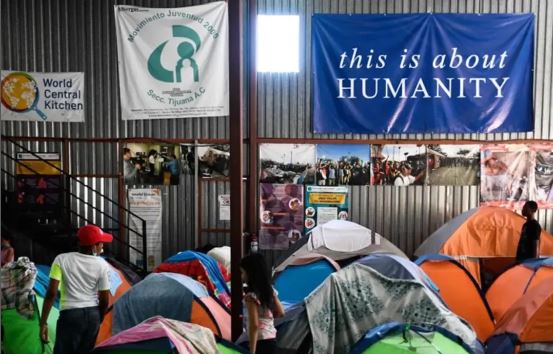Thousands of Latino refugees arrive in the Mexican city of Tijuana each year, hoping to one day cross the border that separates them from the United States. As the world watches the unfolding of a humanitarian crisis resulting from Russia's war against Ukraine, Tijuana's port of entry on the US border is the scene of another immigration crisis, this one centered on Ukrainians seeking asylum and refugee status.
Just as Ukrainian refugees who fled the Russian invasion recently began crossing the US-Mexico border, many Latinos detained there have been waiting for months for this very possibility and are wondering why they are being treated unequally.
A 44-year-old Mexican, who declined to be identified, asks: “Why are we – neighbors of the United States – not given the same opportunity to seek asylum? We came here fleeing basically the same thing”,
according to the “Inquirer”.
Ukrainians were granted special humanitarian permission to enter the United States, and the government signaled last month that it would take up to 100,000 refugees. Thousands of Ukrainians have since flown to Tijuana to cross the land border to the United States, easier than getting the visa required to fly direct. Volunteers in Tijuana and the neighboring US town of San Ysidro say that, on average, new Ukrainian arrivals wait just two or three days before crossing, “using an entrance available only to them”, according to the publication.
Some might argue that Ukrainian refugees cannot be compared to asylum seekers from Latin America, Haiti or Cameroon. A Mexican couple, who also declined to be identified, fled their Mexican hometown of Irapuato with their three children after Cartel members burned down their home and the small business from which they made a living: “We came here not by choice but out of necessity – we have endured a lot of violence”, said the woman.
The couple and their children live in one of several tents at the shelter called “Movimiento Juventud 2000”, which is just three blocks from another shelter, “Unidad Deportiva Benito Juarez” and is now a reception point for thousands of Ukrainians. According to the publication, the contrast between the two shelters could hardly be starker. At Movimiento Juventud 2000, the atmosphere is heavy with frustration and sadness, while at Benito Juarez, relief and hope abound. Volunteers at the Ukrainian shelter have created a database to keep up with the rapid turnover of asylum seekers [and] by Saturday afternoon [April 9], more than 2,600 Ukrainians had registered. At Movimiento Juventud 2000, some families have been waiting as long as six months for a change in border restrictions that would allow them to apply for asylum”.
Thanks to donations from both sides of the border, Ukrainian volunteers set up a children's play area in their shelter. Toys, crayons, and books are available, while more donated toys arrive every day.
Nearby, Haitian, Mexican, and Central American children have no space and few materials, although they are entertained a few times a week by UNICEF staff and individual volunteers.
While helping families in a war-torn country is a plausible thing to do, there is a stark contrast in the way other asylum seekers are treated and the appalling conditions that Central Americans, Mexicans, Haitians and Cameroonians have had to face for months. to hold on.
 ostrev.com
ostrev.com











